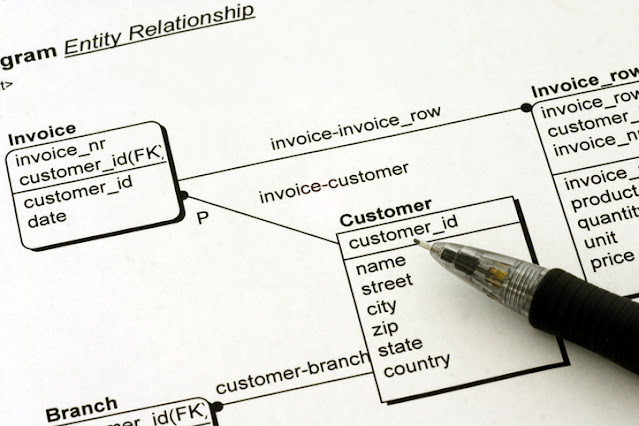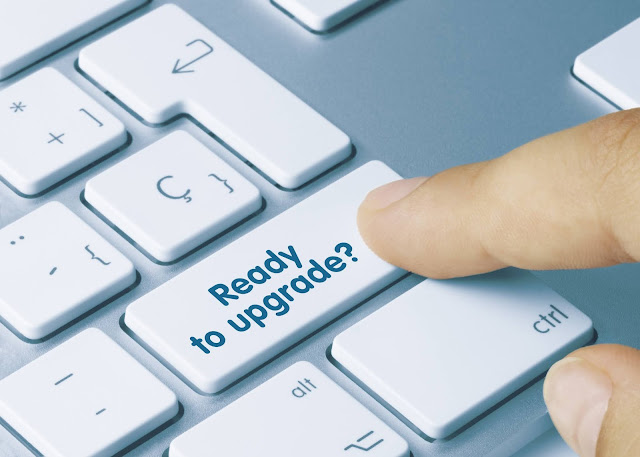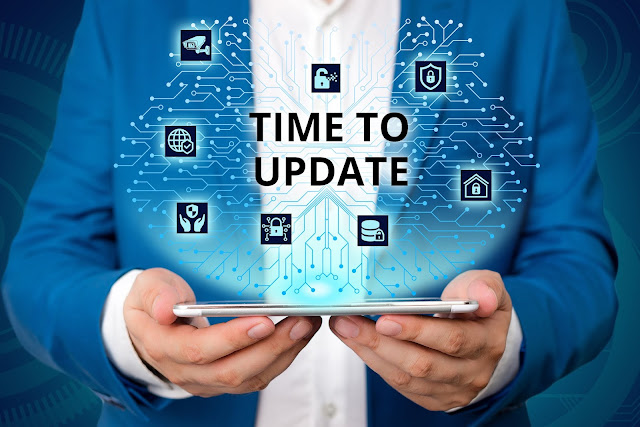Popular posts from this blog
When using grids, trees or any other of multi-valued component with Vaadin you often want to display data from a database table and typically you have more than a few rows in the database. When using grids, trees or any other of multi-valued component with Vaadin you often want to display data from a database table and typically you have more than a few rows in the database. In this case loading thousands or even millions of records don’t make sense and would be a huge performance problem. For this use case Vaadin provides lazy loading using a CallbackDataProvider . To create a CallBackDataProvider you must implement a CountCallback and a FetchCallback . The CountCallback is used to provide the total number of records. And the FetchCallback is used for paging. Both methods receive a Query object that contains filter, sorting, offset and limit. In this example you can see how to use offset and limit. DataProvider<Employee, Void> dataProvider = new CallbackDataProvider...
Recording of Vaadin Dev Day Spring 2021
I had the pleasure to speak at the Vaadin Dev Day about “High-performance data access with Vaadin”. I had the pleasure to speak at the Vaadin Dev Day about “High-performance data access with Vaadin”. The recording is available on YouTube:
Java Persistence Done Right
When it comes to accessing relational databases with Java, people usually think of two options When it comes to accessing relational databases with Java, people usually think of two options: 1. SQL (Structured Query Language) 2. ORM (Object Relational Mapping) Because the usage of SQL with the Java API JDBC (Java Database Connectivity) is painful and error-prone the first choice is usually an ORM like JPA/Hibernate. ORM Let’s have a look at the definition of ORM on Wikipedia : Object-relational mapping (ORM, O/RM, and O/R mapping tool) in computer science is a programming technique for converting data between incompatible type systems using object-oriented programming languages. This creates, in effect, a “virtual object database” that can be used from within the programming language. The idea behind a ORM framework is to hide the database access from the user. Another goal is to introduce capability to the database access layer that is do not exits in a relational database like inheri...
Five Ways to Tell It's Time to Break Up with Your Legacy System
When it comes to business operations, it’s easy to get comfortable in the status quo. When it comes to business operations, it’s easy to get comfortable in the status quo. Change seems daunting, especially in the context of legacy software. But often, just because a relationship is comfortable, doesn’t mean it’s what’s best for your enterprise in the long term. Here are a few reasons why it may be time to break up with your legacy system: 1. Security Issues Any enterprise worth its salt takes security seriously. Outdated software is one of the best ways hackers exploit their victims. There are thousands of industrial malware programs designed to target your systems in order to harvest you and your customers’ data, including sensitive financial information. Many malware programs can lurk for months (even years) harvesting information undetected. Here are several examples of how attackers focus on legacy gaps alone. 2. Reduced Performance In many cases, company productivity can only be a...
Making the Case for Digital Renovation
Are you working for an enterprise that utilizes outdated software? Are you working for an enterprise that utilizes outdated software? Old software, or legacy systems, pose threats to businesses looking to streamline processes, cut costs, and stay innovative. While users resist change and implementing new software is neither easy nor always feasible, opting for digital renovation can bridge legacy systems to modern demands. Legacy Systems Cost Your Business Too Much Money In making a case for software modernization, the most compelling reason tends to be the money saved by reducing excess labor costs and other inefficiencies incited by legacy systems. Less efficient to maintain Due to the grandiose size of legacy systems’ codebases, updating these systems can engender various problems, rendering the process both laborious and lengthy when done correctly. Additionally, the infrastructure of old software is more challenging to maintain and becomes increasingly challenging as the software ...
How to Create A Software Modernization Roadmap
Software modernization is key to staying ahead in your industry. Software modernization is key to staying ahead in your industry. It improves performance and prevents unexpected lapses in security and productivity. Application modernization roadmaps are a window into the future to manage expectations for budgets, outcomes, timelines, and teams to ensure you have the smoothest transition possible with the best possible results for your modernization project. We’ve developed a five-stage process for your software modernization journey: Prioritize, Engage, Execute, Modernize, and Optimize . We know all companies are different, so take our roadmap and modify it to suit your organization and process. 1. Prioritize To start, you need to gather your core team of stakeholders to prioritize your goals and vision for your company. Once you’ve established your goals, select a software modernization service provider, and sign a Memorandum of Understanding (MoU) to engage their services. If your mi...
The Art of Application Modernization: Making New Things Out of Old Stuff
Software integration and efficiency are critical elements of your business that impact your most important stakeholders. Software integration and efficiency are critical elements of your business that impact your most important stakeholders. Your software systems and their performance comprise a digital ecosystem designed to serve the needs of many individuals simultaneously. This always-on system surrounds your company’s daily tasks, the consumer experience, and the long-term growth potential of your organization. From the boardroom to your workforce and your customers, it is critical to have the most up-to-date integration of your systems so they run smoothly. Investing in secure, well-integrated technology benefits everyone in ways that are subtle and obvious. The frustration that builds up task by task over long load times can become a slow leak to the enthusiasm of your employees. A major software outage caused by long-overdue updates has the potential to result in weeks or months...
Computing Case Study: Tracing the Failures of COVID-19 Vaccine Portals
It’s January 2021 in the United States. With the blessing of President-Elect Biden, Moderna and Pfizer plan to roll out the COVID-19 vaccine at warp speed. It’s January 2021 in the United States. With the blessing of President-Elect Biden, Moderna and Pfizer plan to roll out the COVID-19 vaccine at warp speed. Within days high-risk individuals were given the green light to make appointments and receive their first dose of the innovative vaccine. What happens next, you probably remember well: confusion, upset, frustration, and crashing websites across the country From coast to coast, vaccine portals were failing. Even the country’s epicenters of eminent technological minds, California and Massachusetts, were not spared. Los Angeles experienced a heightened struggle as Governor Newsom confused the citizens as to who was eligible to receive vaccines. Subsequently, the LA County public health website experienced prolific crashing. What Went Wrong with the Vaccine Portals? The breakdown of ...
After Automation: What Comes Next?
Digital transformation isn’t a fix-it-and-forget-it operation. Once you’ve transformed your processes, here’s what comes next. So, you made the jump, and transformed your IT systems with the most efficient processes available. Your legacy systems are gone, or all grown up with new and powerful software, innovative technology has been implemented throughout your organization, and efficiency and productivity maximized across the board. From automation to AI, the digital transformation is complete, and your system is prepared for whatever the future holds. As you survey the results of your time, effort, and innovation, you might be wondering… Now what? Digital transformation isn’t a fix-it-and-forget-it operation. Once you’ve transformed your processes, here’s what comes next: Looking Behind As you bask in the glow of your newly-minted modernized IT systems and software, take a moment to remember the last time you did this. Maybe it was ten years ago, but all those legacy systems that you...
Blog Posts
Java 16 Records with JPA and jOOQ
- Get link
- X
- Other Apps
The new Java version 16 includes a new feature: Records
Java Records
The new Java version 16 includes a new feature: Records
https://openjdk.java.net/jeps/395 “Enhance the Java programming language with records, which are classes that act as transparent carriers for immutable data. Records can be thought of as nominal tuples.”
Let’s try Java records with JPA and jOOQ.
JPA Constructor Expression
One way to use projection in JPA queries is using the constructor expression. The name constructor expression implies that the constructor is called with the fields from the projection.
select new com.demo.dto.EmployeeDTO(e.name, e.department.name) from Employee e
In the example we have a DTO called EmployeeDTO and the constructor takes two Strings as parameters.
With Java before Java 16 we would create a class like this:
public final class EmployeeDTO {
private final String employeeName;
private final String departmentName;
public EmployeeDTO(String employeeName, String departmentName) {
this.employeeName = employeeName;
this.departmentName = departmentName;
}
public String employeeName() {
return employeeName;
}
public String departmentName() {
return departmentName;
}
@Override
public boolean equals(Object obj) {
if (obj == this) return true;
if (obj == null || obj.getClass() != this.getClass()) return false;
var that = (EmployeeDTO) obj;
return Objects.equals(this.employeeName, that.employeeName) &&
Objects.equals(this.departmentName, that.departmentName);
}
@Override
public int hashCode() {
return Objects.hash(employeeName, departmentName);
}
@Override
public String toString() {
return "EmployeeDTO[" +
"employeeName=" + employeeName + ", " +
"departmentName=" + departmentName + ']';
}
}
Thanks to Java 16 Records this is now much simpler:
public record EmployeeDTO(String employeeName, String departmentName) {
}
This Record will contain the required constructor and also the methods to get the employeeName and the departmentName so it’s a perfect fit for JPAs constructor expression!
jOOQ SQL Projection
Besides JPA there is another great solution for accessing relational database systems: jOOQ
With jOOQ we can write type-safe SQL in Java. And very often we also want DTOs as a result. Also here Java Records shine:
List<EmployeeDTO> employees = dsl
.select(EMPLOYEE.NAME, DEPARTMENT.NAME)
.from(EMPLOYEE).join(DEPARTMENT).on(EMPLOYEE.DEPARTMENT_ID.eq(DEPARTMENT.ID))
.fetchInto(EmployeeDTO.class);
Conclusion
Java Records are a great addition to the Java language and a great fit to use with persistence technologies like JPA or jOOQ.
If you want to try it on your own, please find the example code on GitHub: https://github.com/72services/java16-jpa-jooq
- Get link
- X
- Other Apps


























































